Visit to Naval Air Station - NAS Luni, an Italian Navy's state-of-the-art air station
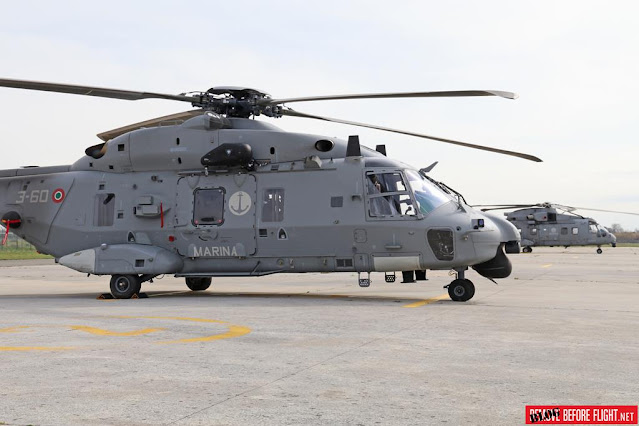 |
| Italian Navy MH-90 and EH-101 helicopters sit on the flightline at NAS Luni, Northern Italy. |
NAS Luni (Maristaeli Luni) is one of the Italian Navy's three NASs and a center of excellence within the Italian Navy Fleet Air Arm. It is home to several EH-101 and NH-90 helicopters operated on two front-line squadrons, the 1st Helicopter Squadron (1º Gruppo Elicotteri) and the 5th Helicopter Squadron (5º Gruppo Elicotteri).
The base is located near La Spezia in Northern Italy and covers approximately 450,000 square meters. It has a relatively short history, with construction beginning in the 1960s in an area adjacent to the nearby aerodrome. The base became operational on November 1st 1969 with the establishment of the 5° Gruppo Elicotteri, equipped with the Agusta-Bell AB-47J which was joined two years later by the 1° Gruppo Elicotteri, transferring from NAS Catania, Sicily, with its Sikorsky SH-34s. Both Squadrons have been stationed there ever since and form the heart of the NAS' operational and supporting activities.
NAS Luni's primary function is to provide logistic support, training, and standardization to the crews of the two helicopter squadrons, as well as supporting the aircraft embarked on the ships and those deployed in the operational environment. The main tasks of the two helicopter squadrons are to maintain the operational readiness of their crews and aircraft, while supporting the Fleet. Both squadrons operate in support to amphibious and special operations, cooperating with the Italian Navy's amphibious infantry Brigade (Brigata Marina San Marco – BMSM) and special operations forces from the Comando Subacquei e Incursori (COMSUBIN). In addition to that, the 5º Gruppo Elicotteri operates also in Anti-Surface & Anti-Submarine Warfare roles.
The squadrons provide training for both pilots and aircrew. EH-101 crews have the ability to train directly at NAS Luni, thanks to the advanced simulator, which has recently reached 10 years and 7,900 flight hours. The Full Crew Mission Simulator (FCMS) and Rear Crew Trainer (RCT) facilities provide a comprehensive crew training environment for all versions of the EH-101, enabling both student pilots and experienced crews to receive initial and recurrency flight and mission training, or practice emergency cockpit procedures, night-vision goggle training, ship deck landings, and tactical mission training.
The base is located near La Spezia in Northern Italy and covers approximately 450,000 square meters. It has a relatively short history, with construction beginning in the 1960s in an area adjacent to the nearby aerodrome. The base became operational on November 1st 1969 with the establishment of the 5° Gruppo Elicotteri, equipped with the Agusta-Bell AB-47J which was joined two years later by the 1° Gruppo Elicotteri, transferring from NAS Catania, Sicily, with its Sikorsky SH-34s. Both Squadrons have been stationed there ever since and form the heart of the NAS' operational and supporting activities.
NAS Luni's primary function is to provide logistic support, training, and standardization to the crews of the two helicopter squadrons, as well as supporting the aircraft embarked on the ships and those deployed in the operational environment. The main tasks of the two helicopter squadrons are to maintain the operational readiness of their crews and aircraft, while supporting the Fleet. Both squadrons operate in support to amphibious and special operations, cooperating with the Italian Navy's amphibious infantry Brigade (Brigata Marina San Marco – BMSM) and special operations forces from the Comando Subacquei e Incursori (COMSUBIN). In addition to that, the 5º Gruppo Elicotteri operates also in Anti-Surface & Anti-Submarine Warfare roles.
The squadrons provide training for both pilots and aircrew. EH-101 crews have the ability to train directly at NAS Luni, thanks to the advanced simulator, which has recently reached 10 years and 7,900 flight hours. The Full Crew Mission Simulator (FCMS) and Rear Crew Trainer (RCT) facilities provide a comprehensive crew training environment for all versions of the EH-101, enabling both student pilots and experienced crews to receive initial and recurrency flight and mission training, or practice emergency cockpit procedures, night-vision goggle training, ship deck landings, and tactical mission training.
The RCT section of the simulator mirrors the rear cabin of an SH-101A, the Anti-Submarine Warfare (ASW) version of the EH-101, which is used to teach and refresh crews' operation of all the sensors, avionics, and software systems in the aircraft. The FCMS and RCT can either be used independently or be networked to offer a complete and realistic mission training environment for the EH-101 pilots and sensor operators.
As for the SH-90 crews, NAS Luni will soon take a new step forward and will be equipped with a modern simulator for the type.
NAS Luni also hosts the "Helo Dunker": a mock-up helicopter cockpit and cabin suspended from a large steel girder over a large swimming pool in the Survival Training Centre building. The Helo Dunker is used for underwater escape training and can be plunged into the pool and flipped over into a variety of positions to train crews to escape from a submerged helicopter in an unusual orientation after an accident.
"Once a year pilots and crew need to go through the training course to stay current on their survival capabilities. The two-day course consists of a theoretical part and a 'wet' part, where pilots and crew get hands-on training at increasing levels of difficulty. We train around 500 pilots and crew members every year," Commander Massimo Battaglia said.
In addition to the personnel of the Italian Navy, the Helo Dunker also provides training to the crews of other Italian and foreign armed forces.
"We do not only train Italian Navy aircrew. We have a wide range of operators, such as the Italian Air Force and Coast Guard. Over the years we have also trained aircrew from foreign countries. In 2019, we initiated a multi-year training program for the Qatari Navy, which is introducing the NH-90," Battaglia said.
The Italian Navy uses the Canadian Survival Systems Limited's Model 40 Modular Egress Training Simulator (METS), a cutting-edge system that was introduced in September 2018 and offers a wide range of training options.
"It gives us the ability to train many scenarios and we now also have the possibility to train on the rescue hoist, something we could not do in the past in a controlled environment. The breakthrough provided by this new system is that it gives us the ability to change up to eight interchangeable emergency escape exits, modifying the layout of the Helo Dunker to replicate the EH-101, NH-90 or AW-139 with just the one system," Battaglia said.
The 1° Gruppo Elicotteri operates two EH-101 versions: the EH-101A Airborne Early Warning (AEW) and the MH-101A Amphibious Support Helicopter (ASH). Compared to the AEW, the ASH benefits from a rear cargo ramp that allows the Unit to perform a wide range of additional missions, including combat search and rescue (CSAR), support to population in disaster relief operations, and support to COMSUBIN during special operations on land and at sea (oil platforms and cruise ships).
The first fully operational airframes in the Step B configuration entered service on November 8st 2013, supporting the systems integration for air-to-surface missiles such as the MBDA Marte Mk/2S and torpedoes, plus advanced satellite and encrypted communications, radar, and avionics capabilities. The 5º Gruppo Elicoterri provides helicopters for ship-based missions, with several SH-90s deployed on board Italian Navy ships at any time.
A further relevant unit at NAS Luni is the Naval Test Evaluation Center (Centro Sperimentale Aeromarittimo – CSA). It was established on January 1st 2006 as an evolution of the previous EH-101 working group, born in 1996 to manage the introduction into service of the new helicopter. The CSA has the task of conducting the study and operational evaluation of new helicopters, systems, and weapons introduced by the Italian Navy. It has test pilots and crews capable of flying and operating on board of all Italian Navy aircraft. It also conducts flight tests with aircraft from other Italian Armed Forces. An outstanding example is the process carried out to achieve the safe and successful operation of the Italian Army "Mangusta" attack helicopters on board of the Italian Navy amphibious ships. In addition, the CSA helps in the design of the flight deck, hangars and all rooms linked to flight activities on board.
During our visit to NAS Luni we also had the opportunity to take a flight aboard an SH-90A helicopter engaged in a scheduled training mission. The mission, preceded by a detailed briefing, included a coastal patrol in the Gulf of La Spezia during which the crew simulated the interception of an Italian Navy minesweeper. Thanks to the FLIR (Forward Looking InfraRed) and the indications provided to the pilots by the on-board sensor operator, the crew was able to identify the "suspicious" boat sailing beyond the visual range and quickly reach it for visual identification. During this activity, we were able to appreciate the skills of the personnel and systems of the 5° Gruppo Elicotteri, as well as the importance of thegreat interaction between the crew and the decisive role played by the unit.
A further relevant unit at NAS Luni is the Naval Test Evaluation Center (Centro Sperimentale Aeromarittimo – CSA). It was established on January 1st 2006 as an evolution of the previous EH-101 working group, born in 1996 to manage the introduction into service of the new helicopter. The CSA has the task of conducting the study and operational evaluation of new helicopters, systems, and weapons introduced by the Italian Navy. It has test pilots and crews capable of flying and operating on board of all Italian Navy aircraft. It also conducts flight tests with aircraft from other Italian Armed Forces. An outstanding example is the process carried out to achieve the safe and successful operation of the Italian Army "Mangusta" attack helicopters on board of the Italian Navy amphibious ships. In addition, the CSA helps in the design of the flight deck, hangars and all rooms linked to flight activities on board.
During our visit to NAS Luni we also had the opportunity to take a flight aboard an SH-90A helicopter engaged in a scheduled training mission. The mission, preceded by a detailed briefing, included a coastal patrol in the Gulf of La Spezia during which the crew simulated the interception of an Italian Navy minesweeper. Thanks to the FLIR (Forward Looking InfraRed) and the indications provided to the pilots by the on-board sensor operator, the crew was able to identify the "suspicious" boat sailing beyond the visual range and quickly reach it for visual identification. During this activity, we were able to appreciate the skills of the personnel and systems of the 5° Gruppo Elicotteri, as well as the importance of thegreat interaction between the crew and the decisive role played by the unit.
Although the station is quite small compared to an Air Force air base, it has concentrated countless high-tech facilities that make it one of the most advanced military installations in Europe. It is highly efficient with highly trained personnelwho effectively performs all the roles they are required to cover.
The author would like to thank the Italian Navy Press Office and CC Antonio Rossi for having authorized the visit and their collaboration for this report; the Commanding Officer of NAS Luni, Captain David Ilardi, for the warm welcome; the Commanding Officer of the 5° Gruppo Elicotteri, Commander Andrea De Natale and Commander Massimo Battaglia for their support throughout the tour, as well as all of Luni's staff met during the visit.


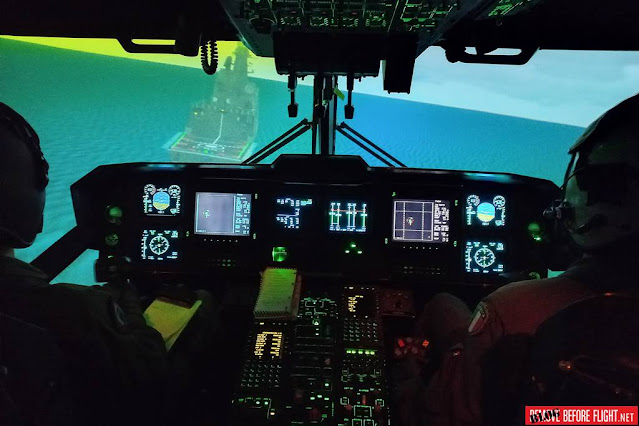

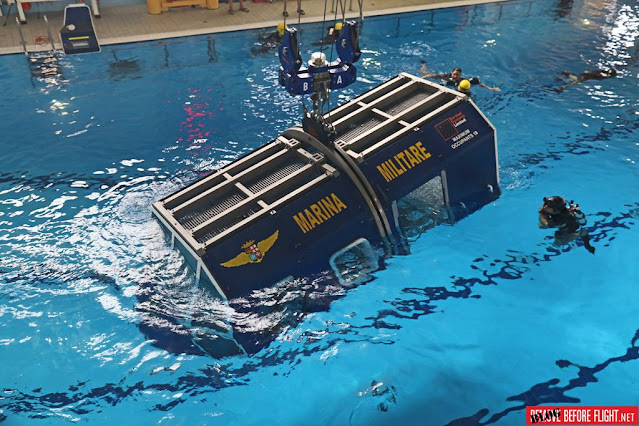



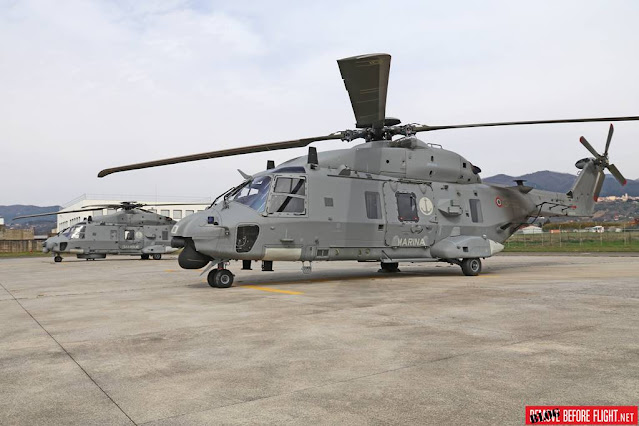


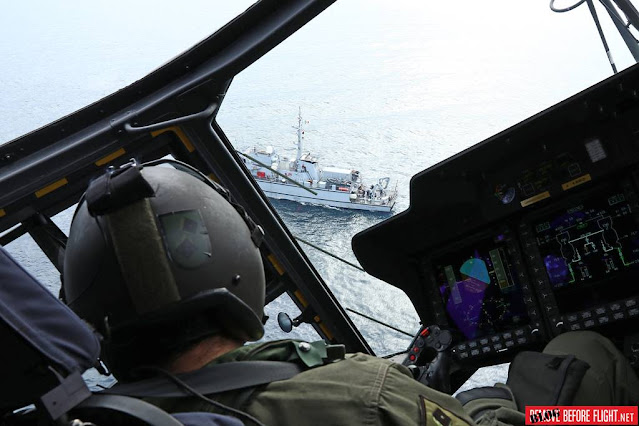
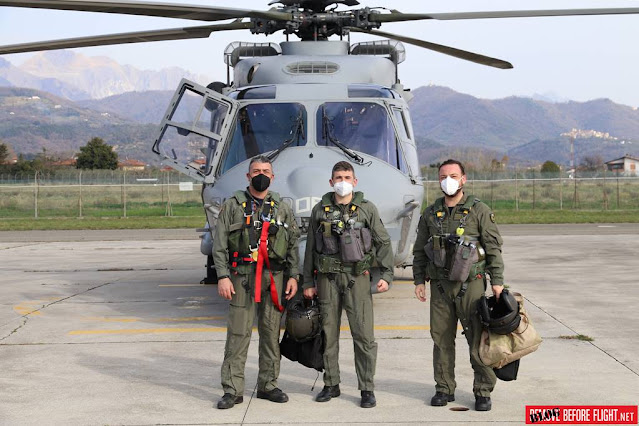




No comments
All comments related to the contents of our articles are welcome. It is not allowed to post promotional messages, links to external sites, or references to activities not related to this blog.